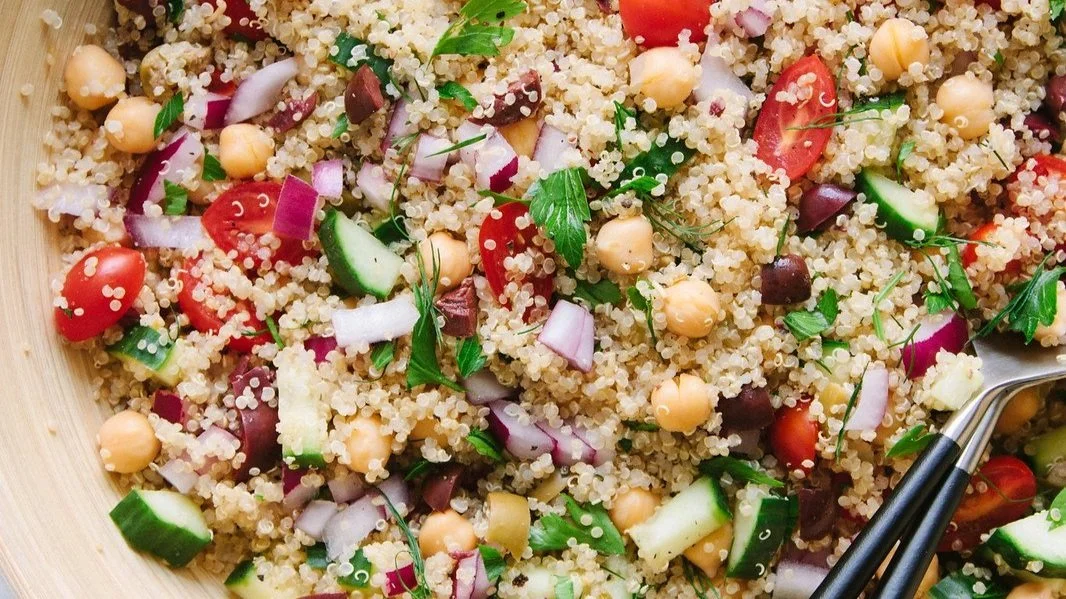Incorporating Anti-Inflammatory Foods into Your Diet
Week 2
Welcome back! This week, we're diving into the vibrant world of anti-inflammatory foods. Chronic inflammation can contribute to numerous health issues, but the good news is that what you eat can make a significant difference. We'll explore key anti-inflammatory foods, share creative and allergy-friendly recipes, and offer tips on substituting common allergens to keep your meals both nutritious and delicious.
Key Anti-Inflammatory Foods
Incorporating anti-inflammatory foods into your diet can help reduce inflammation and promote overall health. Here are some top picks that are safe for individuals with food allergies:
Fruits: Berries (blueberries, strawberries, raspberries), cherries, oranges, and apples are packed with antioxidants and vitamins that combat inflammation.
Vegetables: Leafy greens (spinach, kale), cruciferous vegetables (broccoli, cauliflower, Brussels sprouts), and colorful veggies like bell peppers and tomatoes.
Nuts and Seeds: Chia seeds, flaxseeds, hemp seeds, and almonds (ensure no nut allergies) are excellent sources of omega-3 fatty acids and other anti-inflammatory compounds.
Fatty Fish: Salmon, mackerel, sardines, and trout are rich in omega-3 fatty acids, which are known for their anti-inflammatory effects.
Herbs and Spices: Turmeric, ginger, garlic, cinnamon, and rosemary are not only flavorful but also have potent anti-inflammatory properties.
Creative Recipe Ideas
Let's put these wonderful foods to work with some tasty and allergy-friendly recipes:
Breakfast: Berry Chia Seed Pudding
Ingredients:
2 cups almond milk (or any plant-based milk)
1/2 cup chia seeds
1 cup mixed berries (fresh or frozen)
1 tsp vanilla extract
1 tbsp maple syrup (optional)
Instructions:
In a bowl, combine almond milk, chia seeds, vanilla extract, and maple syrup.
Stir well and let it sit for 5 minutes. Stir again to break up any clumps.
Cover and refrigerate overnight.
Top with mixed berries before serving.
Lunch: Quinoa Salad with Turmeric Dressing
Ingredients:
1 cup cooked quinoa
1 cup chickpeas (canned, drained, and rinsed)
1 cup cherry tomatoes, halved
1 cucumber, diced
1/4 cup red onion, finely chopped
2 tbsp fresh parsley, chopped
Dressing:
1/4 cup olive oil
1 tbsp apple cider vinegar
1 tsp turmeric powder
1 tsp honey
Salt and pepper to taste
Instructions:
In a large bowl, combine quinoa, chickpeas, tomatoes, cucumber, red onion, and parsley.
In a small bowl, whisk together olive oil, apple cider vinegar, turmeric, honey, salt, and pepper.
Pour the dressing over the salad and toss to coat.
Dinner: Baked Salmon with Garlic and Rosemary
Ingredients:
4 salmon fillets
2 tbsp olive oil
4 garlic cloves, minced
2 tbsp fresh rosemary, chopped
Juice of 1 lemon
Salt and pepper to taste
Instructions:
Preheat the oven to 375°F (190°C).
Place the salmon fillets on a baking sheet lined with parchment paper.
In a small bowl, mix olive oil, garlic, rosemary, lemon juice, salt, and pepper.
Brush the mixture over the salmon fillets.
Bake for 20-25 minutes, until the salmon is cooked through.
Snack: Spiced Apple Slices
Ingredients:
2 apples, sliced
1 tsp cinnamon
1 tbsp almond butter (optional, if no nut allergy)
Instructions:
Arrange apple slices on a plate.
Sprinkle with cinnamon.
Serve with a side of almond butter for dipping.
Alternative Ingredients
For those with food allergies, here are some excellent anti-inflammatory alternatives:
Milk Substitutes: Use plant-based milks such as almond, oat, or coconut milk.
Nut-Free Options: Swap nuts with seeds like sunflower seeds, pumpkin seeds, or tahini.
Gluten-Free Choices: Use gluten-free grains such as quinoa, rice, or buckwheat.
Egg Alternatives: Use flax eggs (1 tbsp ground flaxseed + 3 tbsp water) or chia eggs (same ratio) as a binder in baking.
Oil Substitutes: Use avocado oil or coconut oil instead of butter.
Adapting Recipes
When modifying recipes to accommodate allergies, focus on maintaining nutritional balance. For example, if replacing nuts with seeds, ensure you're still getting enough healthy fats and proteins. Experiment with different combinations to find what works best for your taste and dietary needs.
Final Thoughts
Incorporating anti-inflammatory foods into your diet doesn't have to be a chore. With a little creativity and planning, you can enjoy delicious, nutritious meals that support your health goals while accommodating any food allergies. Start with these recipes and tips, and discover how delightful and beneficial anti-inflammatory eating can be!
Happy cooking and enjoy your inflammation-fighting meals this week!





